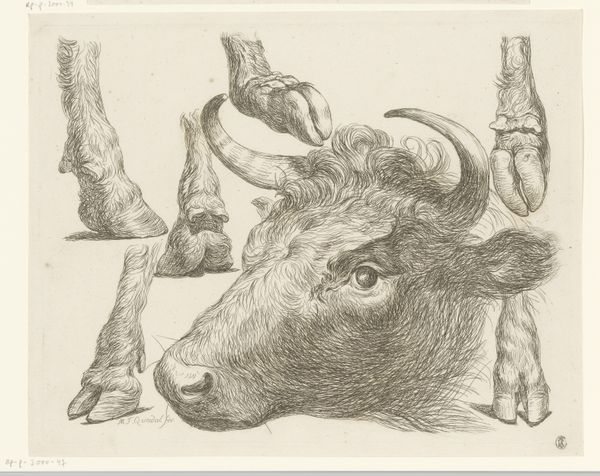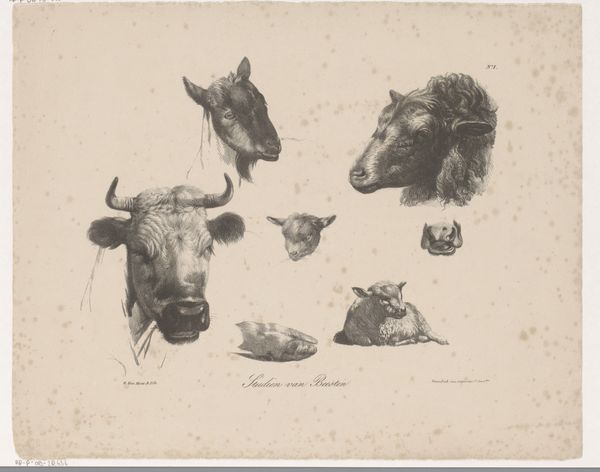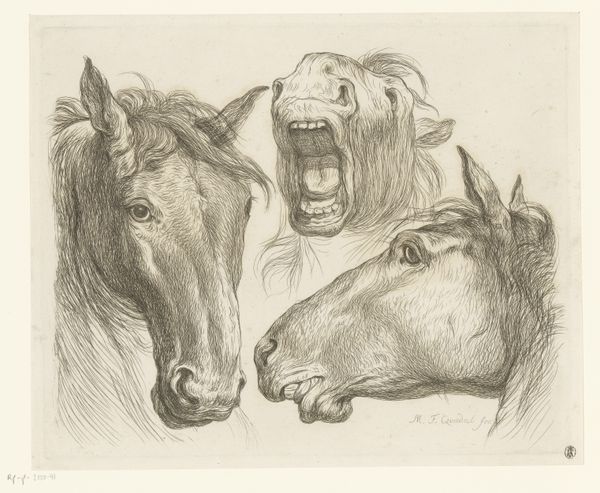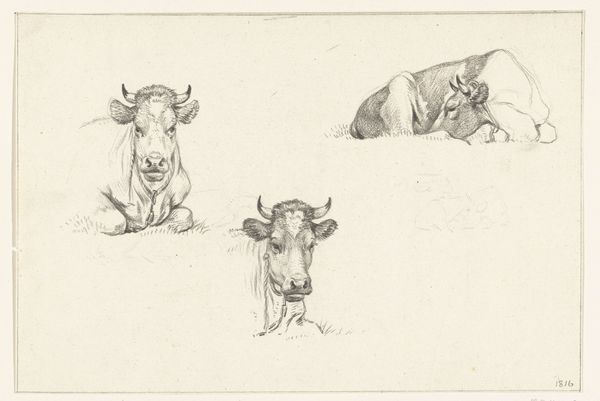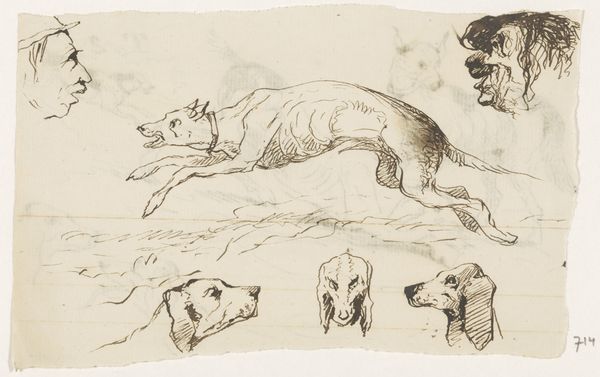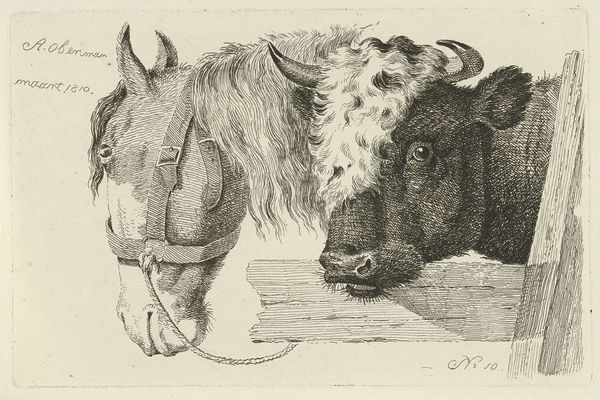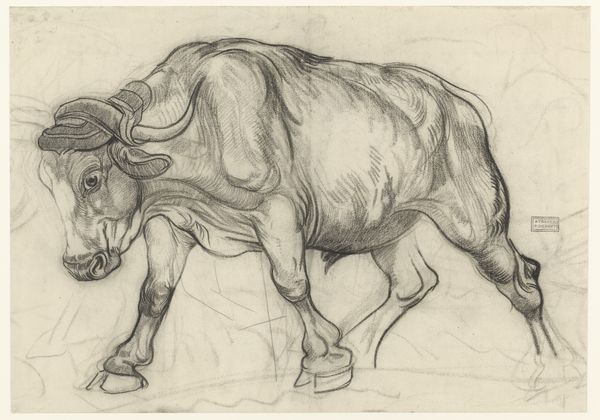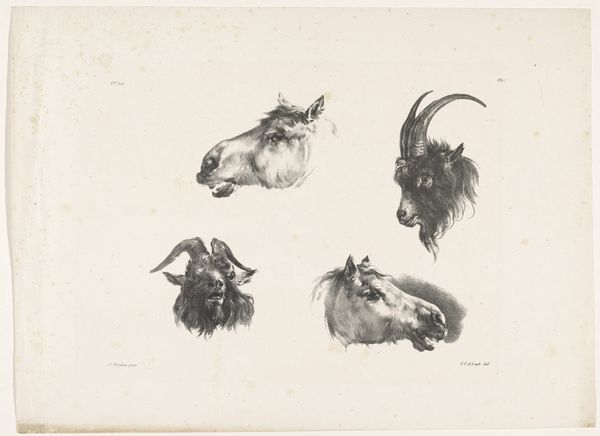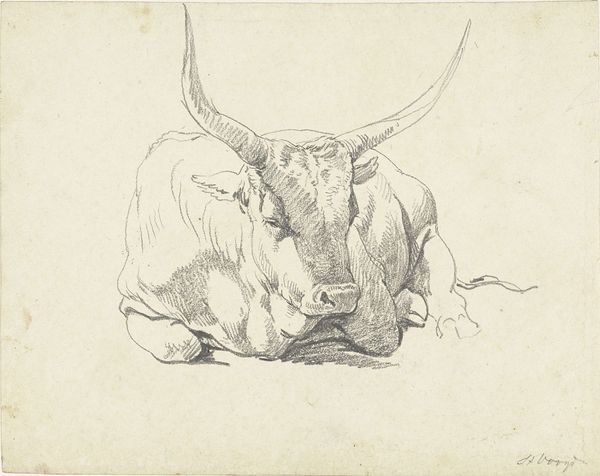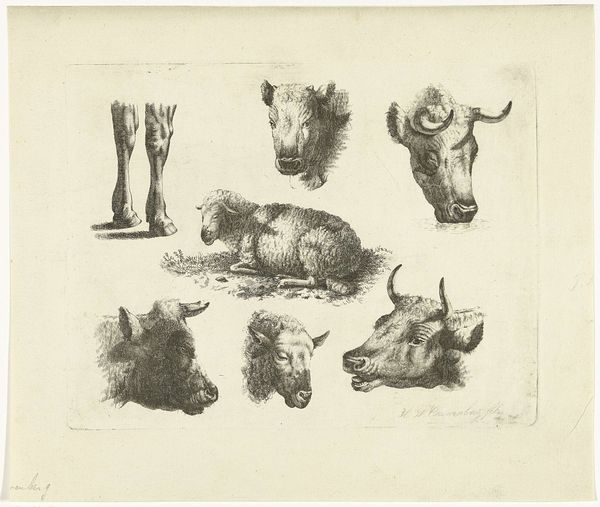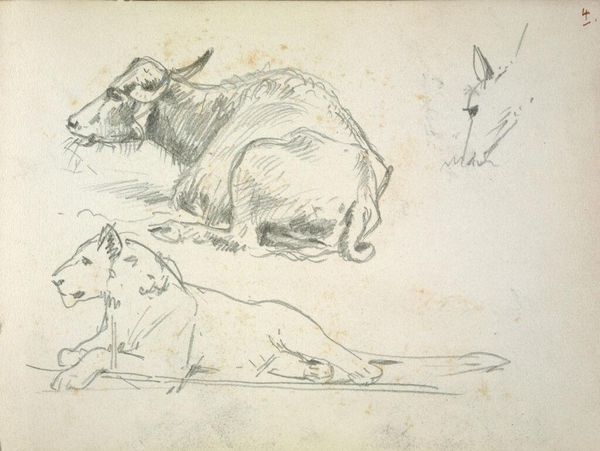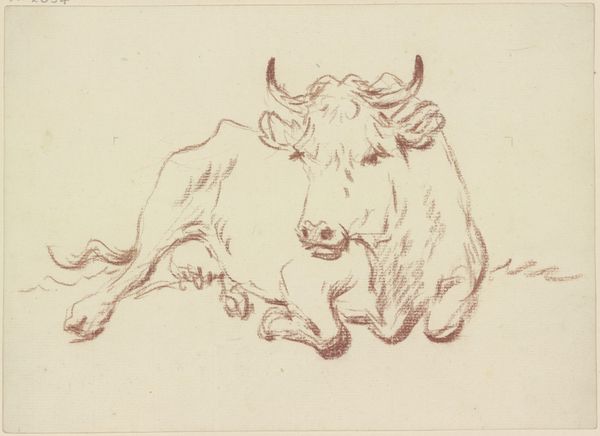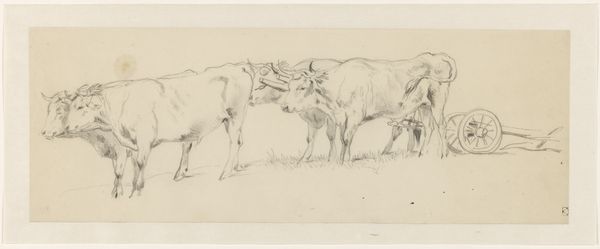
drawing, pencil
#
portrait
#
pencil drawn
#
drawing
#
animal
#
pencil sketch
#
pencil drawing
#
pencil
#
sketchbook drawing
#
portrait drawing
#
pencil work
#
academic-art
#
realism
Dimensions: height 234 mm, width 294 mm
Copyright: Rijks Museum: Open Domain
Editor: We're looking at "Drie koeienkoppen," or "Three Cow Heads," a pencil drawing from 1793 by Martin Ferdinand Quadal. There's something really striking about how lifelike they are, especially given that they're just studies of animal heads. What do you make of a portrait like this? Curator: This drawing exists within a complicated nexus of power, class, and agriculture. In 1793, animal portraiture wasn’t simply about representing the animal. It was about property, lineage, and often, the glorification of agrarian wealth. Does it make you consider the role animals played in the economies and societies of the 18th century? Editor: I hadn’t really considered that. I was mainly thinking about the artist's skill. So, is this less about art and more about documentation? Curator: It's both! The artist's skill is undeniable, but that skill serves a social purpose. Think about who would commission or buy such a drawing. Wealthy landowners, most likely. It's about reinforcing a certain social order where land and livestock equal power. Do you see hints of academic art here? Editor: Definitely. It seems very formal and controlled, not really trying to elicit emotions, just accurate depictions. What is your take? Curator: Indeed, this intersection between art, wealth, and social class compels us to examine our own contemporary values and structures. In many ways, little has changed. Looking at the legacy of wealth that prioritizes profit over empathy might inspire action in some, or resignation in others. But acknowledging these unequal historical contexts will inevitably empower more meaningful perspectives of artistic intent. Editor: I didn't consider those aspects at all. Thanks for putting this work in that historical context. Curator: It’s in the dialogue that art comes alive! Now, perhaps you can reflect on what we just learned, in conjunction with modern day animal activism!
Comments
No comments
Be the first to comment and join the conversation on the ultimate creative platform.
